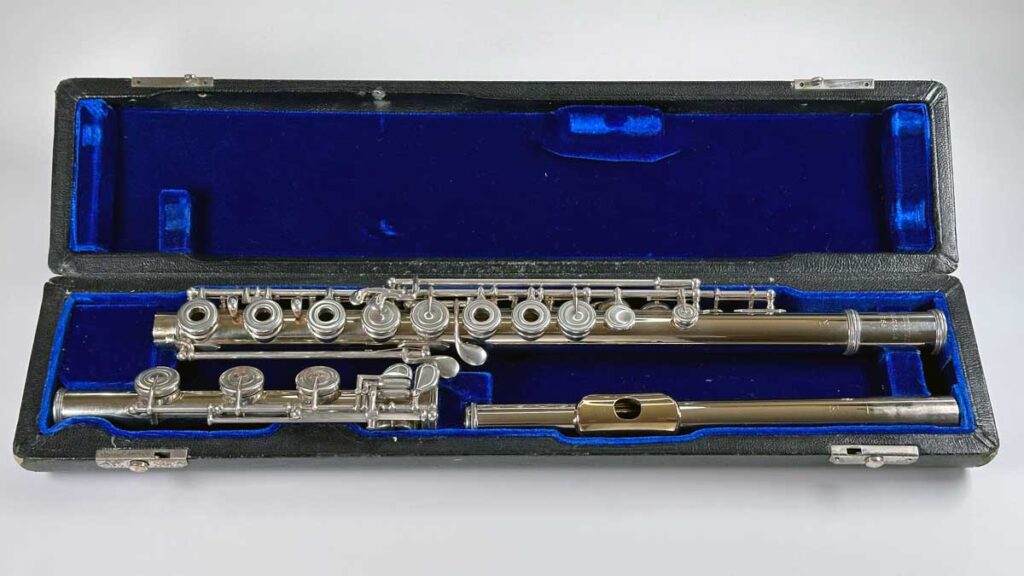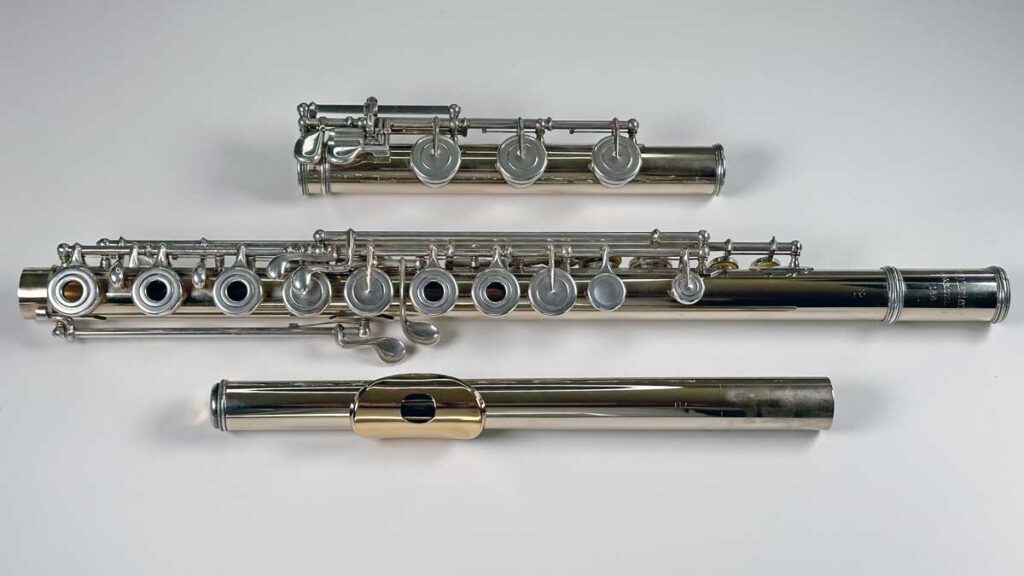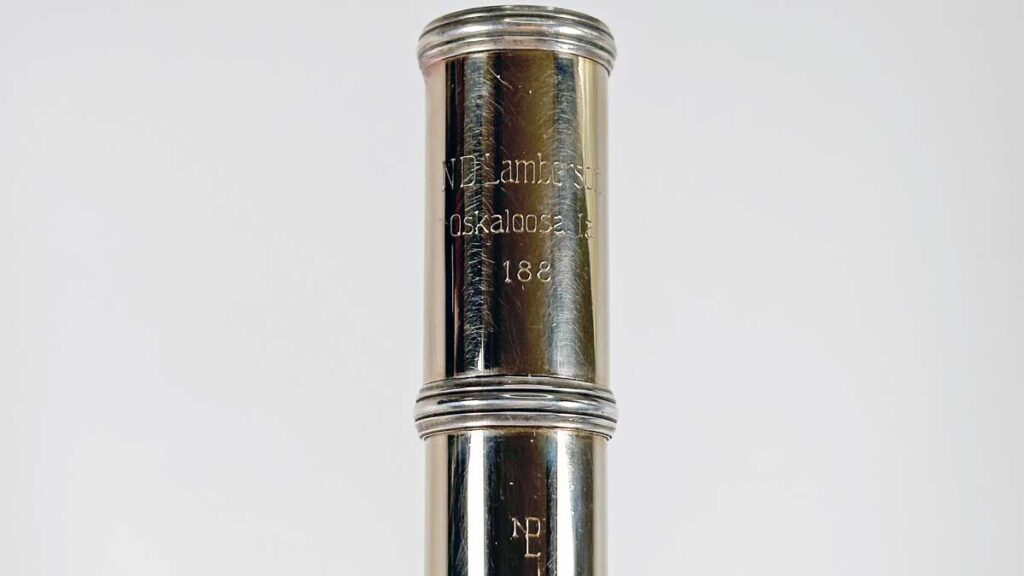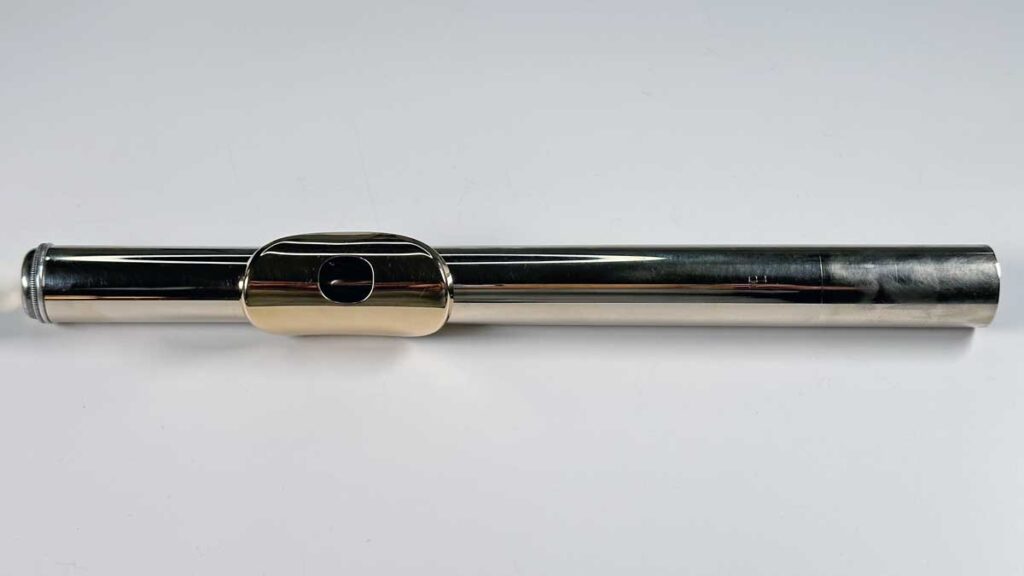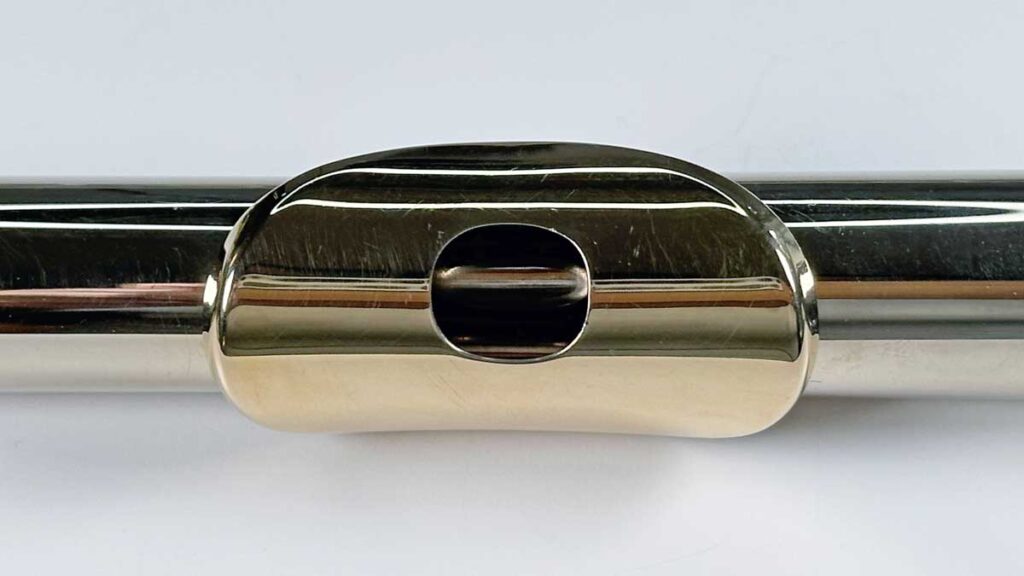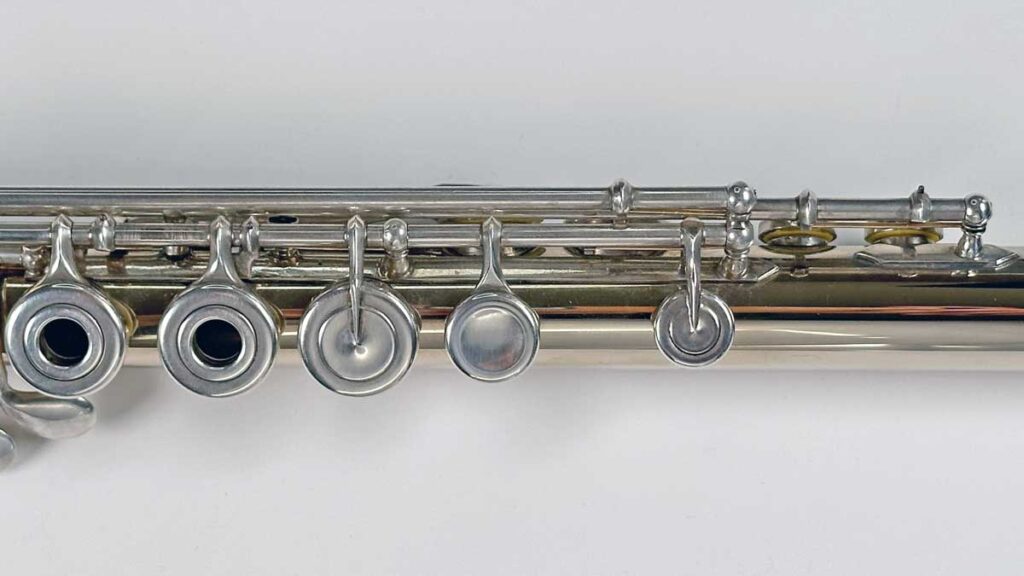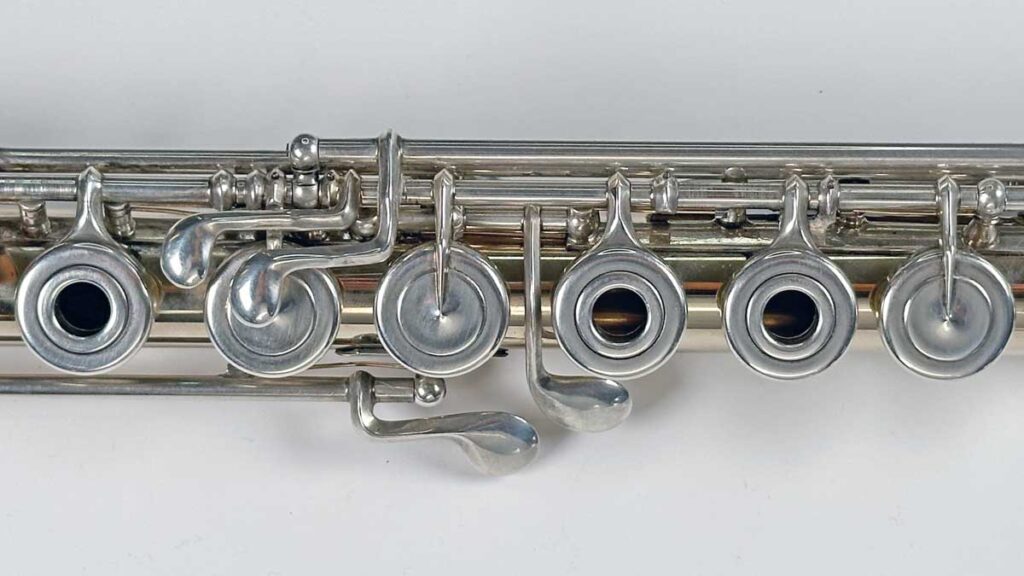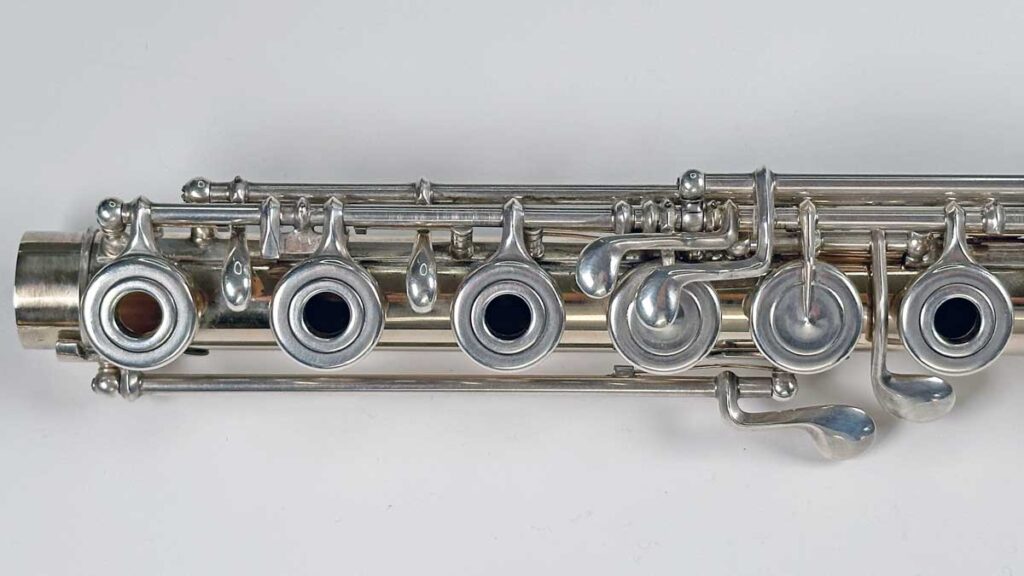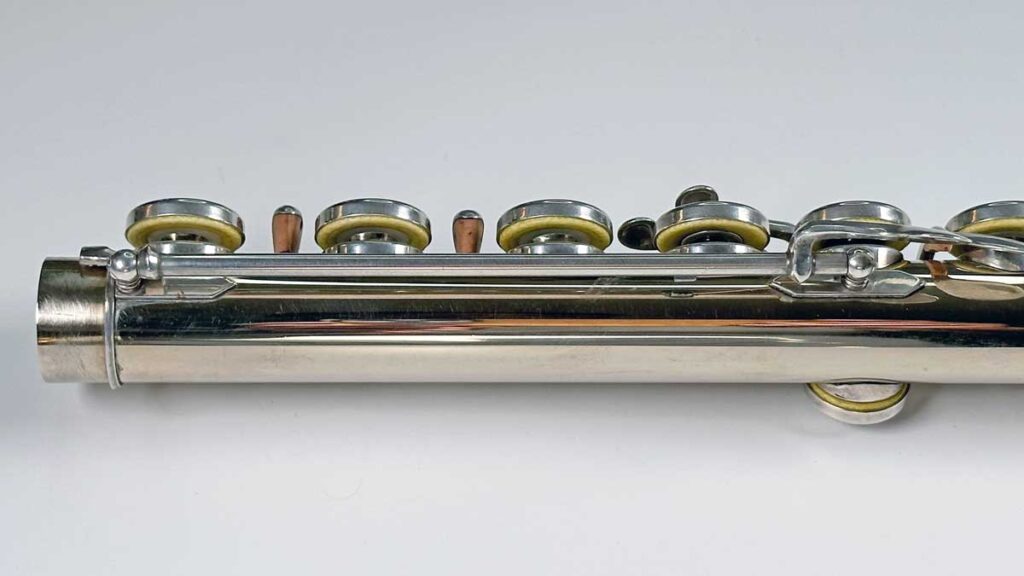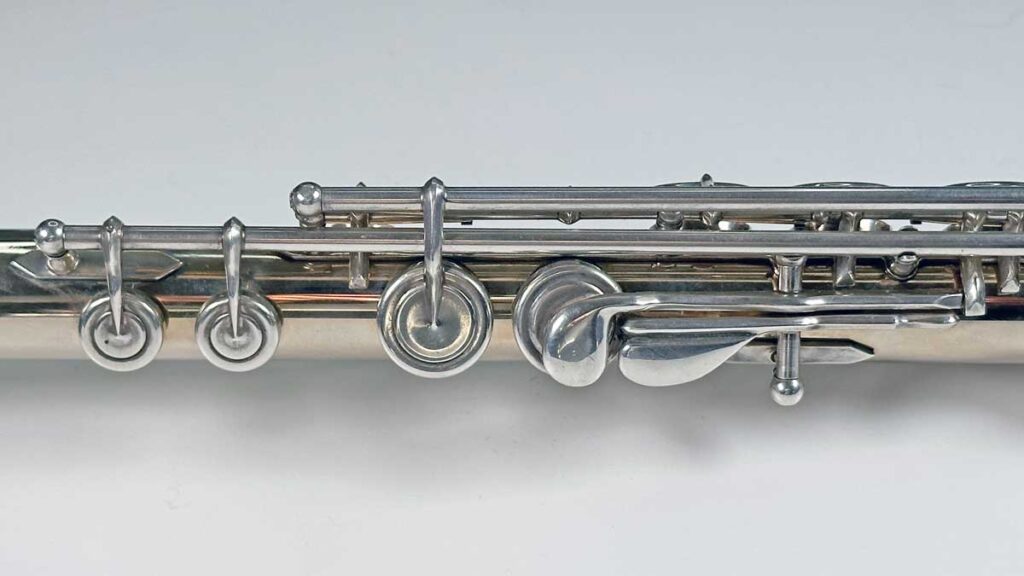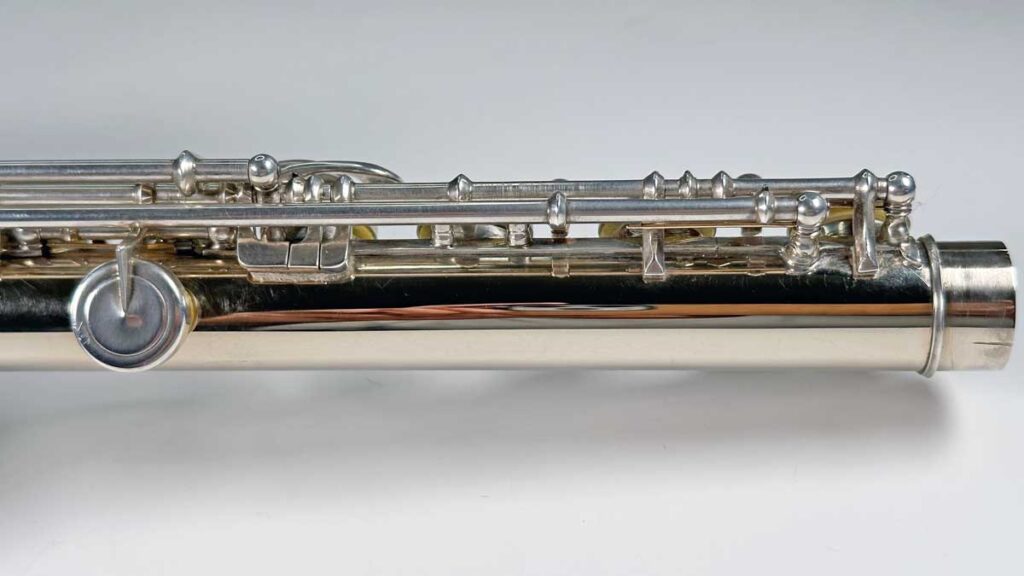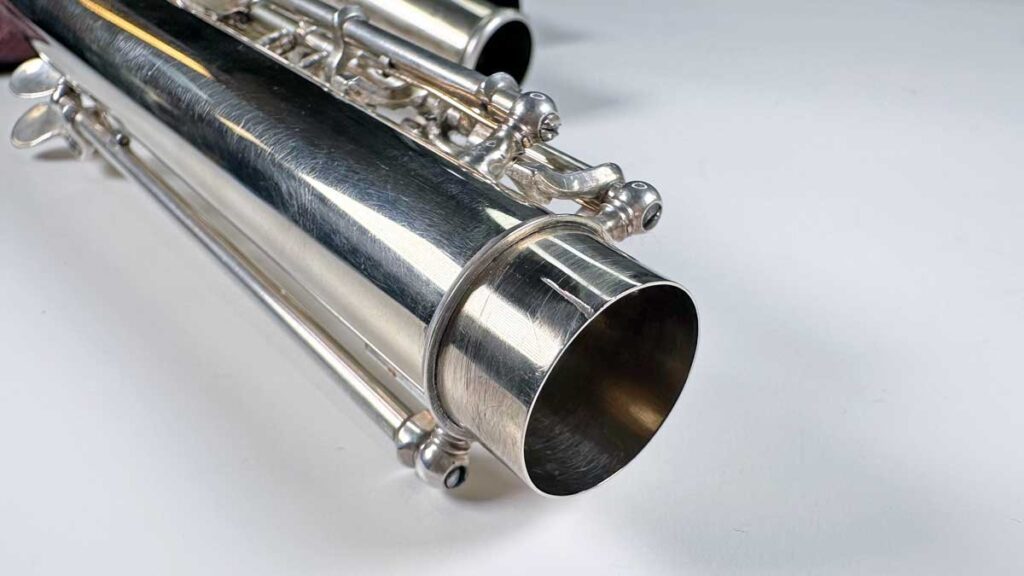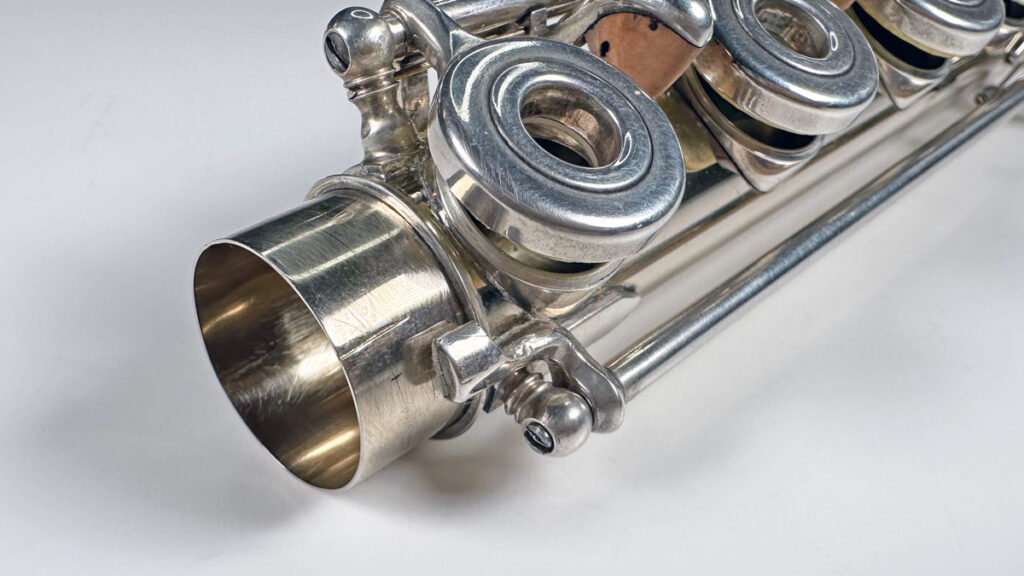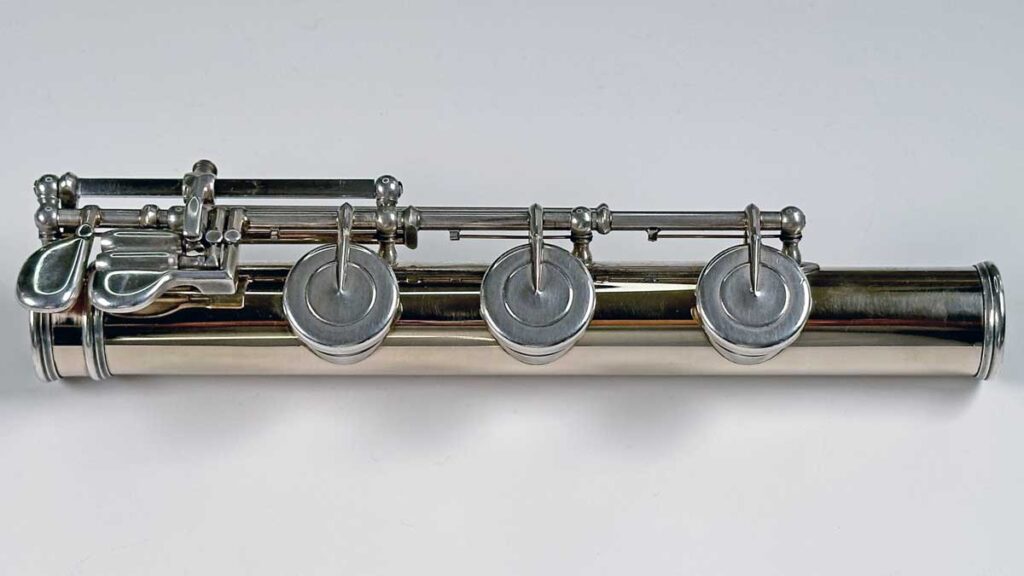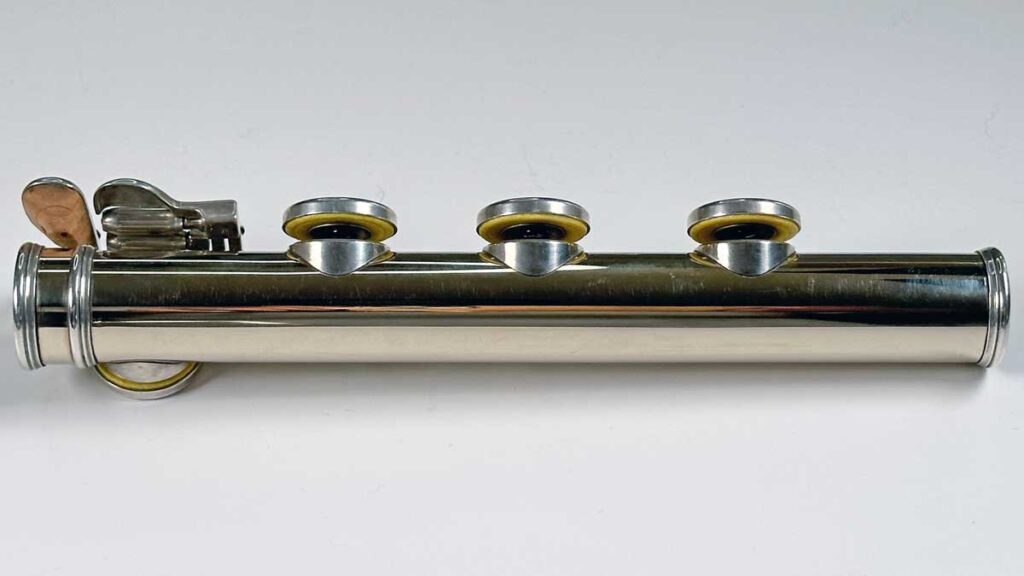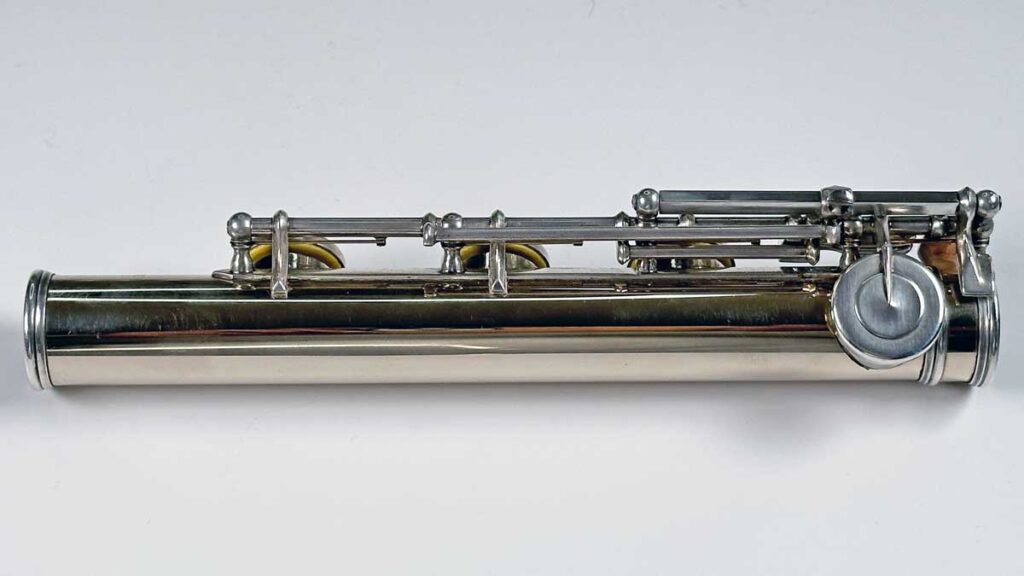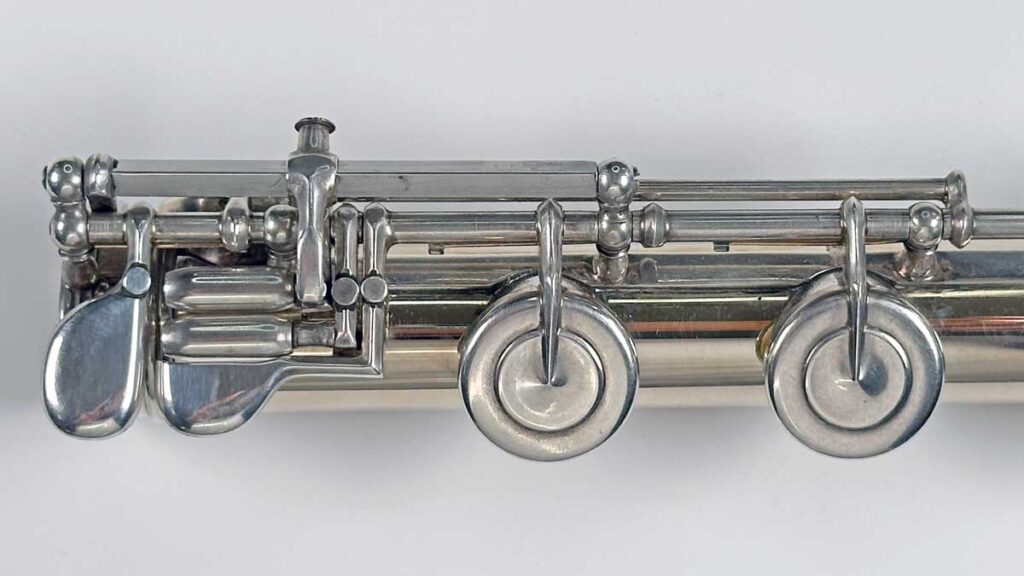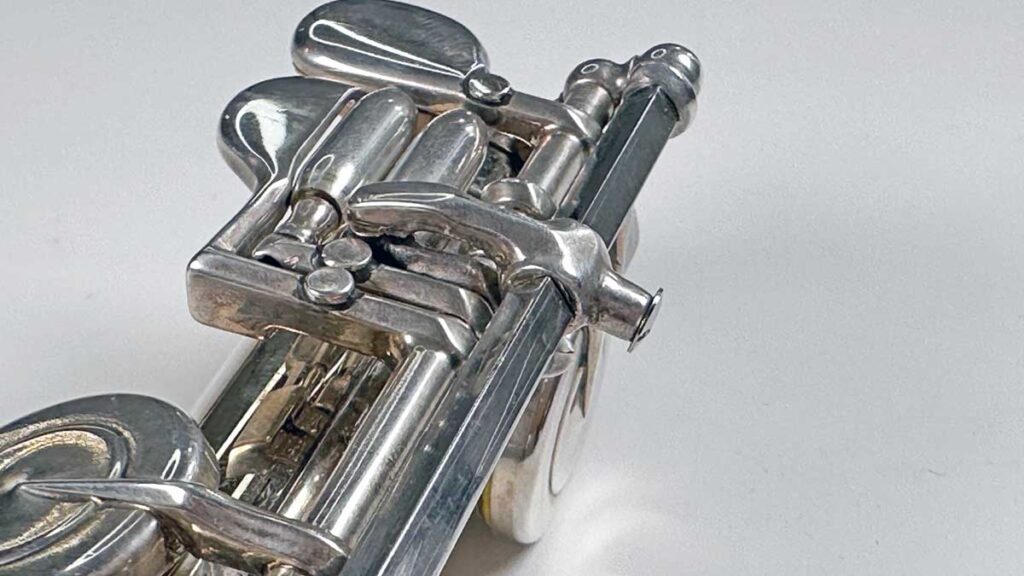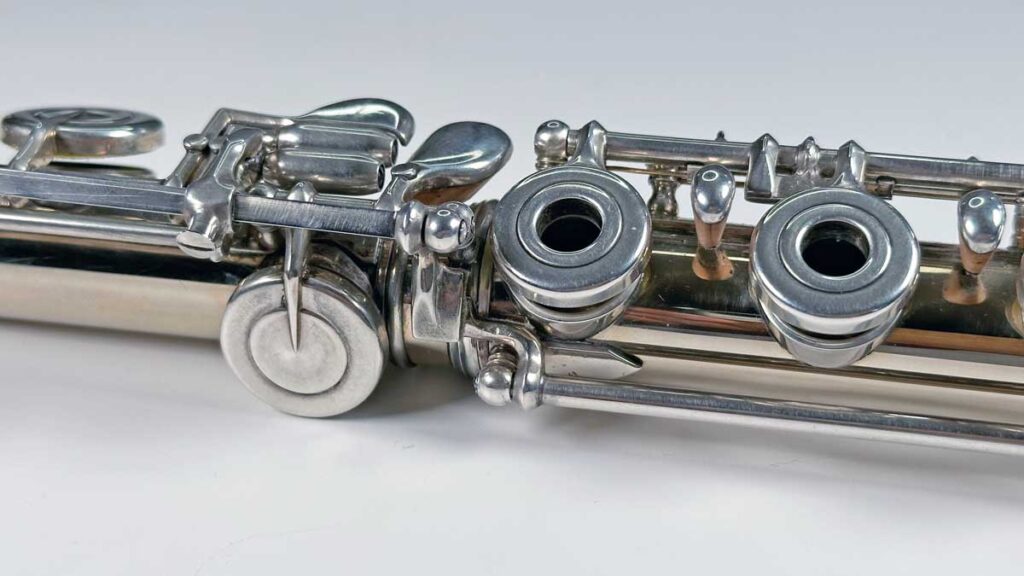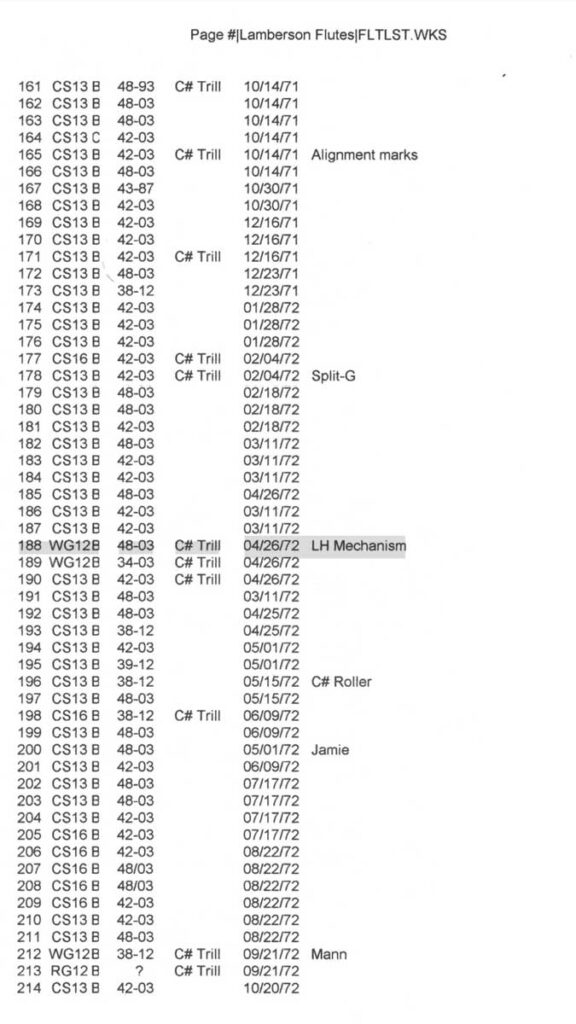- Completed on April 26, 1972 in Oskaloosa, IA
- 14k white gold tubing, 0.012″
- Soldered silver tone holes
- Silver mechanism
- Open hole
- Pointed keys
- Inline G
- C# trill
- B-foot
- Left-hand lever
- Gold-bonded lip plate
- Silver riser
- Embouchure: 10.68 mm x 12.22 mm
- Embouchure height: 0.209″
- Weight: 502 g
- Traditional scale
- A=440 Hz
Playing a vintage white gold flute is a real treat. They are relatively rare because few flutemakers (pre-2000) were willing to work with this notoriously difficult alloy, which can sometimes be harder than platinum. Even Verne Powell built only one white gold flute (#900 made in 1950). Rose gold and yellow gold were much more user-friendly with the tools and machinery at the time. But white gold has a special sound that is unlike rose or yellow gold. Powell thought white gold had a ring and brilliance not heard in other metals, including platinum.
Rose and yellow gold flutes have a predominantly warm sound that blends well with other instruments. They’re ideal for playing with a small ensemble. However, a predominantly warm sound is not always what you want when needing to cut through a large orchestra or stand out in a solo situation.
A white gold flute has a similar warm sound to a rose or yellow gold flute, but the “white” metals in the alloy provide brilliance and resonance, balancing the warmth gold provides. This ideal combination makes a white gold flute versatile in many situations.
Of the 730 flutes Tip Lamberson produced during his career, 35 were white gold, probably the most white gold flutes of any flutemaker of his day. The first white gold flute he constructed was #188 in 1970. (More about 118 in a bit.) We had an opportunity to assay its tubing and found the composition to be gold, copper, nickel, and zinc. Since Lamberson had used the same foundry throughout his career as a flute maker, we suspect all other white gold flutes, including 188, are of similar composition.
Ralph Andrews, a flutist in the San Diego area, purchased 118 from Tip Lamberson in 1970. He was very pleased with how well it played, so he ordered a second white gold flute, 188, which is the flute we have for sale. (We sold 118 and 188 from Ralph Andrews’ estate in 2011. We are pleased to have 188 for sale again. And yes, it is the second white gold flute by Tip Lamberson.)
The sound of 188 is warm with a special resonance often heard in white gold flutes. The low register has lots of depth and flexibility. The second register resonates with a beautiful glow, like a seasoned opera singer. The brightness in the third register has a special brilliance that’s well-tempered by the warmth of gold. Overall, the flute is responsive, well-balanced in sound, and a delight to play. It is one of the finer gold flutes we’ve come across.
188 has a C# trill and a left-hand lever to operate the low B key. The lever is a great feature when you want to temper notes in the third and fourth registers, similar to using a gizmo key. You can also impress your friends by trilling low B to C.
The left-hand lever can also be adjusted to operate the D#, C#, or C key. This is a useful feature if you have problems reaching certain keys. The choice is yours! A technician can also disassemble and reassemble the lever.
Pads are newer and in excellent condition. The original wooden case has been lost to time. It is currently housed in an older French-style case. The original leather carrying case is still available.
Price: $13,950
Sold as is. Sales tax applies to purchases within California. For inquiries on purchasing, please contact Gary Lewis.
